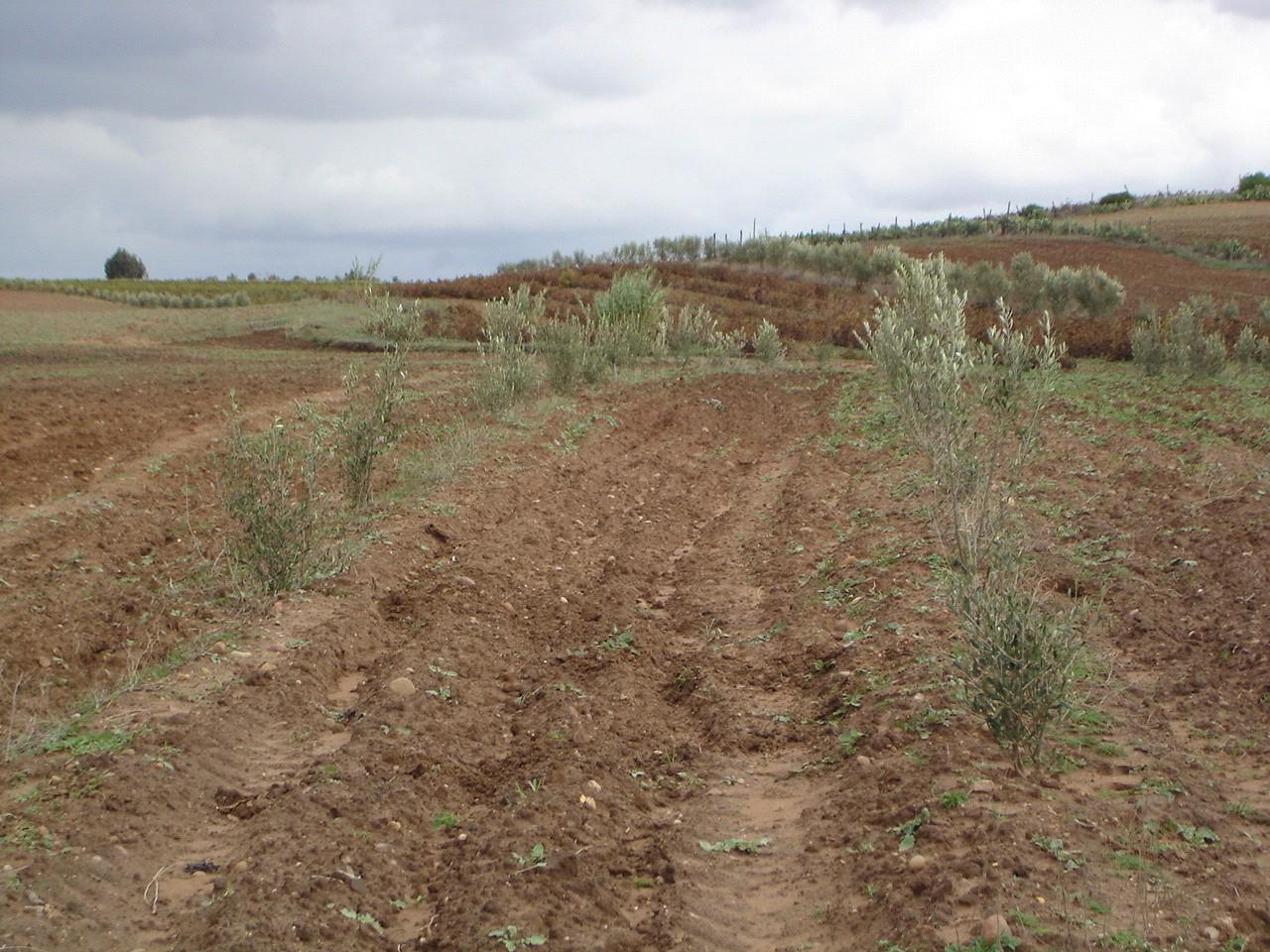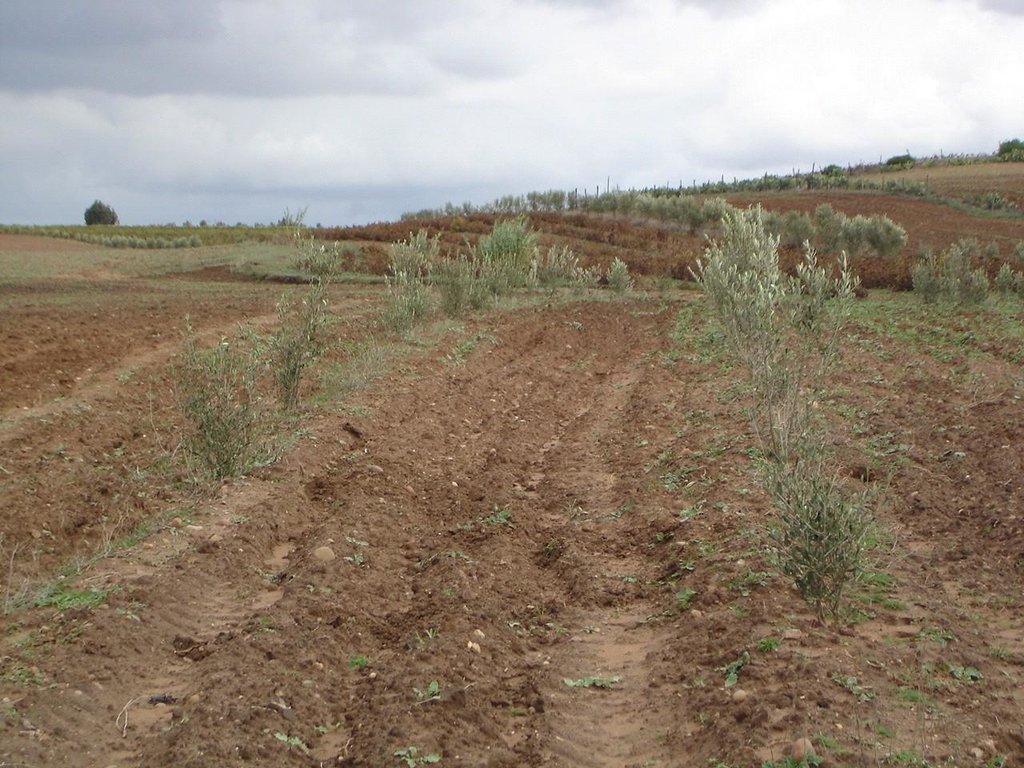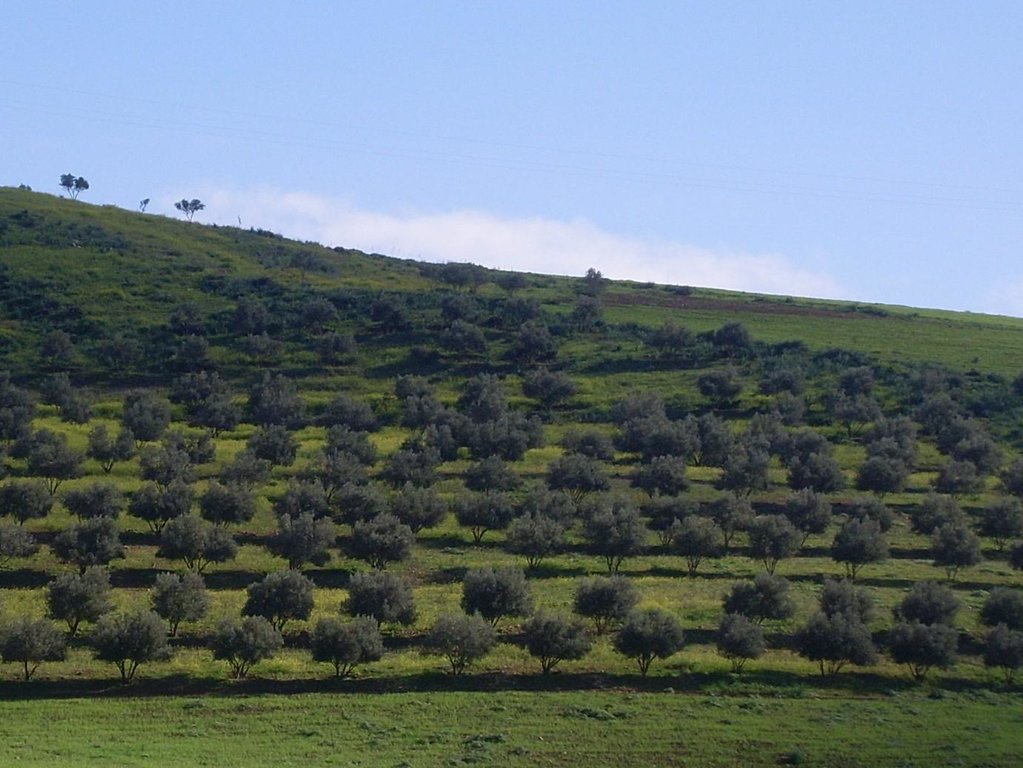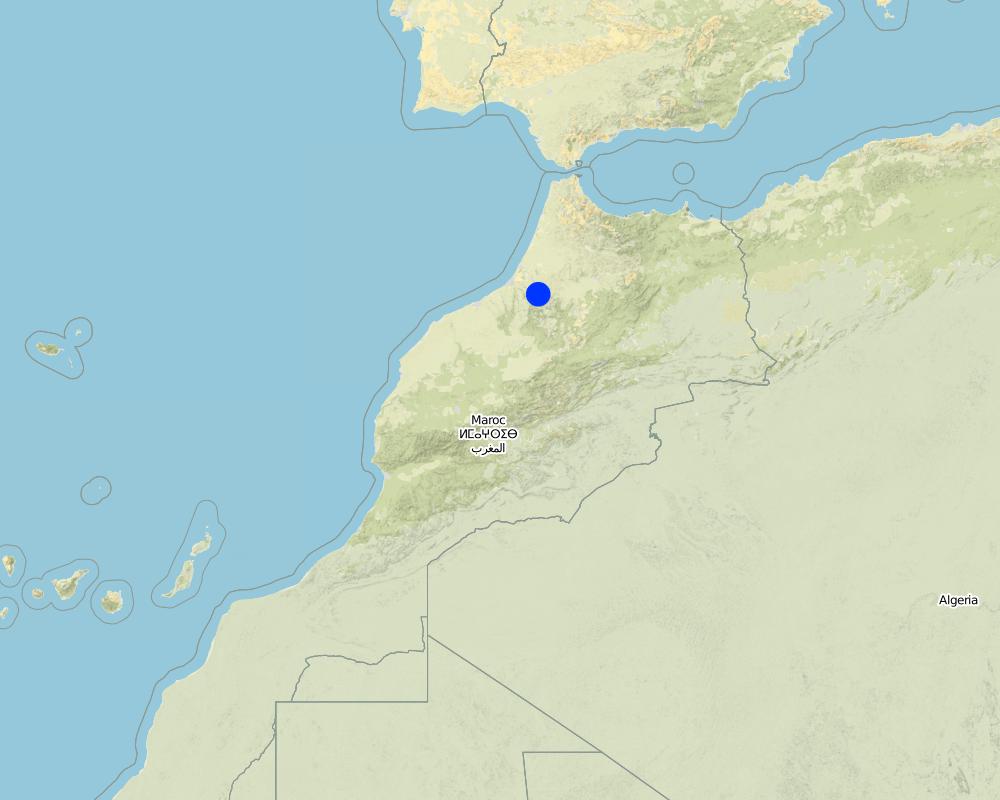Olive tree plantations with intercropping [Morocco]
- Creation:
- Update:
- Compiler: Laouina Abdellah
- Editor: –
- Reviewers: Deborah Niggli, Alexandra Gavilano
Plantations d’olivier avec cultures intercalaires (Fr), Jnane Zitoune (Ar)
technologies_1112 - Morocco
- Full summary as PDF
- Full summary as PDF for print
- Full summary in the browser
- Full summary (unformatted)
- Olive tree plantations with intercropping: May 29, 2019 (public)
- Olive tree plantations with intercropping: April 4, 2018 (inactive)
- Olive tree plantations with intercropping: April 4, 2018 (inactive)
- Olive tree plantations with intercropping: May 10, 2017 (inactive)
- Olive tree plantations with intercropping: May 10, 2017 (inactive)
View sections
Expand all Collapse all1. General information
1.2 Contact details of resource persons and institutions involved in the assessment and documentation of the Technology
Key resource person(s)
SLM specialist:
SLM specialist:
SLM specialist:
Larbi Elktaibi
Université Mohammed V-Agdal, Faculté des Lettres et Science Humaines, Chaire Unesco-GN
Morocco
SLM specialist:
Elhazziti Abdellah
Centre des travaux agricoles Bouknadel
Morocco
land user:
Dahmani Mustapha
Morocco
1.3 Conditions regarding the use of data documented through WOCAT
The compiler and key resource person(s) accept the conditions regarding the use of data documented through WOCAT:
Yes
1.5 Reference to Questionnaire(s) on SLM Approaches (documented using WOCAT)
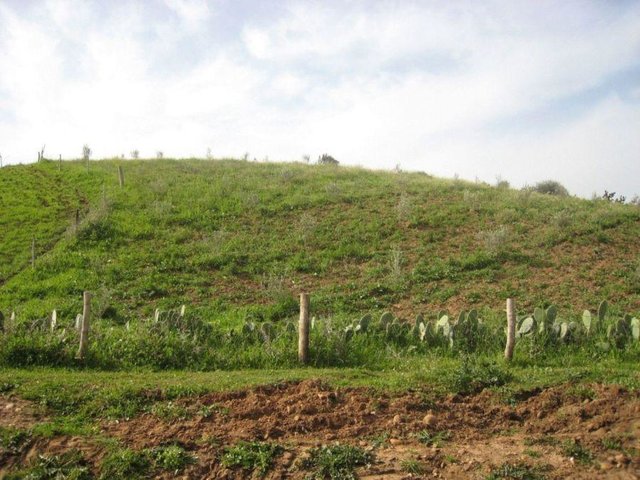
Development of rainfed agriculture [Morocco]
Development of unfavourable zones by integrating all components which can enhance the production, increase incomes and provide a sustainable natural resources management.
- Compiler: Rachida Nafaa
2. Description of the SLM Technology
2.1 Short description of the Technology
Definition of the Technology:
Contour planting of olive trees with crops, legumes and vegetables intercropping
2.2 Detailed description of the Technology
Description:
On gentle slopes of the Sehoul municipality, heavy or prolonged rainfall causes runoff and erosion on cultivated lands cleared at the beginning of the 20th century. In the last 10 years, in some plots, land users have started to implement contour plantations separated by intercropping strips with annual crops. Only the immediate tree surroundings involve harvesting and storing rainwater and runoff. No additional water harvesting structure has been built. A fence around the plot prevents livestock from entering.
Purpose of the Technology: The economic objective of the technology is to improve income, because cultivation of cereals only gives low yields (500-600 kg/ha). Olive trees can provide an attractive yield and can be an alternative to crops especially during drought. As the olive tree is considered a revered tree, the technology is also beneficial from a social viewpoint. Environmental objectives include surface protection against erosion as well as the maintenance and improvement of soil fertility.
Establishment / maintenance activities and inputs: To implement the change, a boundary of barbed wire (Chabkka) or cactus to form a natural hedge is installed in order to prevent livestock intrusion. Plantation work includes breaking up the soil, digging holes along the contour and planting the trees. Animal manure and chemical fertilizers are used as inputs. Weeding, pesticide application and manual watering are required regularly to support tree growth. As a drip-irrigation technique, watering cans with perforations are left to drop water continuously until the cans are empty.
Natural / human environment: The plantations are on a fragile substrate of marl underlying Plio-Quaternary and loamy-stony deposits with more than 40 cm of fersialitic and sandy soil on low-angled slopes (<10 %). The climate is Mediterranean with a semi-arid trend. The socio-economic environment is characterised by a medium-density population (10-50 persons/km2) and scattered homesteads. The traditional production system (cultivation of cereals and extensive breeding) is dominant, as well as the use of traditional techniques and practices. Tillage is performed using animal traction.
2.3 Photos of the Technology
2.5 Country/ region/ locations where the Technology has been applied and which are covered by this assessment
Country:
Morocco
Region/ State/ Province:
Rabat Salé Zemmour Zaer
Further specification of location:
Sehoul
Specify the spread of the Technology:
- evenly spread over an area
If the Technology is evenly spread over an area, specify area covered (in km2):
0.4
Comments:
Total area covered by the SLM Technology is 0.4 km2.
Map
×2.6 Date of implementation
If precise year is not known, indicate approximate date:
- less than 10 years ago (recently)
2.7 Introduction of the Technology
Specify how the Technology was introduced:
- through projects/ external interventions
Comments (type of project, etc.):
The technology has been implemented by the Development of rainfed agriculture project (Projet de Mise en Valeur Bour, MVB) in Shoul. Later, land users have adopted this technology voluntarily and some of them have even been trained about the technology.
3. Classification of the SLM Technology
3.1 Main purpose(s) of the Technology
- reduce, prevent, restore land degradation
- create beneficial economic impact
3.2 Current land use type(s) where the Technology is applied
Land use mixed within the same land unit:
Yes

Cropland
- Annual cropping
- Tree and shrub cropping
Annual cropping - Specify crops:
- cereals - barley
- legumes and pulses - other
- wheat
Tree and shrub cropping - Specify crops:
- olive
Specify:
Longest growing period in days: 270; Longest growing period from month to month: October to June
Comments:
major cash crop: Cereals and legumes cultivation
major food crop: Wheat and barley
olive trees on stripes
Major land use problems (compiler’s opinion): Irregular rainfall and drought, lack of surface water and depth of the groundwater table are major environmental problems. Excessive runoff causes gullying in the event of exceptional heavy rainfall. All fields on slopes are subject to soil loss because of sheet erosion, especially in early autumn, when lands are bare and without a plant cover due to summer grazing. Gully erosion also results from concentrated runoff from bare ground upslope, especially on steep slopes. There is a lack of support from the authorities and agricultural services and insufficient knowledge about water conservation. Technologies for surface water harvesting do not exist.
Future (final) land use (after implementation of SLM Technology): Mixed: Mf: Agroforestry
Type of cropping system and major crops comments: Cultivation system consists of olive trees on stripes and annual intercropping
3.3 Has land use changed due to the implementation of the Technology?
Has land use changed due to the implementation of the Technology?
- Yes (Please fill out the questions below with regard to the land use before implementation of the Technology)

Cropland
- Annual cropping
3.4 Water supply
Water supply for the land on which the Technology is applied:
- rainfed
3.5 SLM group to which the Technology belongs
- area closure (stop use, support restoration)
- improved ground/ vegetation cover
3.6 SLM measures comprising the Technology

agronomic measures
- A7: Others

vegetative measures
- V1: Tree and shrub cover
Comments:
Type of agronomic measures: better crop cover, mixed cropping / intercropping, green manure, breaking crust / sealed surface, contour tillage, pits
Type of vegetative measures: aligned: -contour
3.7 Main types of land degradation addressed by the Technology

soil erosion by water
- Wt: loss of topsoil/ surface erosion
- Wg: gully erosion/ gullying

chemical soil deterioration
- Cn: fertility decline and reduced organic matter content (not caused by erosion)

physical soil deterioration
- Pc: compaction
Comments:
Secondary types of degradation addressed: Wg: gully erosion / gullying, Cn: fertility decline and reduced organic matter content, Pc: compaction
Main causes of degradation: crop management (annual, perennial, tree/shrub) (predominance of soil exhausting cultivations (cereals))
Secondary causes of degradation: other natural causes (avalanches, volcanic eruptions, mud flows, highly susceptible natural resources, extreme topography, etc.) specify (sandy and loamy soil, coming from a crumbly substrate), poverty / wealth (Lack of rehabilitation and improvement means. Land partition.), education, access to knowledge and support services (Low agricultural knowledge. Population having originally a semi-nomadic way of life, until early 20th century)
3.8 Prevention, reduction, or restoration of land degradation
Specify the goal of the Technology with regard to land degradation:
- prevent land degradation
- reduce land degradation
Comments:
Secondary goals: mitigation / reduction of land degradation
4. Technical specifications, implementation activities, inputs, and costs
4.1 Technical drawing of the Technology
Technical specifications (related to technical drawing):
The spatial arrangement of olive trees planted symmetrically (at 6m intervals) with intercropping. The beans grow in the stripes, and there is a barbed wire fence and cactus hedge to prevent livestock intrusion.
Location: Shoul. Salé
Date: 22/3/2008
Technical knowledge required for field staff / advisors: moderate
Technical knowledge required for land users: high
Main technical functions: improvement of ground cover
Secondary technical functions: control of dispersed runoff: retain / trap, reduction of slope angle, increase of infiltration
Better crop cover
Material/ species: olive tree
Quantity/ density: 256 plants
Remarks: on countours
Mixed cropping / intercropping
Material/ species: beans
Quantity/ density: 36 /m²
Remarks: cultivation with alternate stripes
Green manure
Material/ species: animal manure (sheeps)
Quantity/ density: 4 to 6 t
Remarks: manure spreading
Breaking crust / sealed surface
Remarks: continuous tillage prevents from crusting
Contour tillage
Remarks: for the beans cultivation
Aligned: -contour
Vegetative material: F : fruit trees / shrubs
Number of plants per (ha): 256
Vertical interval between rows / strips / blocks (m): 0.6
Spacing between rows / strips / blocks (m): 6
Vertical interval within rows / strips / blocks (m): 6
Width within rows / strips / blocks (m): 1
Fruit trees / shrubs species: olive trees vith intercropping beans
Slope (which determines the spacing indicated above): 10%
Author:
Larbi Elktaibi, Rabat, Maroc
4.2 General information regarding the calculation of inputs and costs
other/ national currency (specify):
Moroccan Dirham
If relevant, indicate exchange rate from USD to local currency (e.g. 1 USD = 79.9 Brazilian Real): 1 USD =:
10.0
Indicate average wage cost of hired labour per day:
50
4.3 Establishment activities
| Activity | Timing (season) | |
|---|---|---|
| 1. | Holes preparation | manual |
| 2. | Manure burying and holes stopping up | manual |
| 3. | Plantation | manual |
| 4. | Soil preparation tillage | mechanical |
4.4 Costs and inputs needed for establishment
| Specify input | Unit | Quantity | Costs per Unit | Total costs per input | % of costs borne by land users | |
|---|---|---|---|---|---|---|
| Labour | Soil preparation tillage | machines/hour | 1.0 | 250.0 | 250.0 | 100.0 |
| Labour | Hole preparation | persons/day/ha | 25.0 | 205.0 | 5125.0 | |
| Labour | Hole stopping | persons/day/ha | 3.0 | 50.0 | 150.0 | |
| Labour | Plantation | persons/day/ha | 3.0 | 170.0 | 510.0 | 100.0 |
| Equipment | Plough | pieces | 1.0 | 300.0 | 300.0 | 50.0 |
| Equipment | Horses | pieces | 2.0 | 10000.0 | 20000.0 | 100.0 |
| Equipment | Pulverizer | pieces | 1.0 | 360.0 | 360.0 | 100.0 |
| Equipment | Sape | pieces | 1.0 | 100.0 | 100.0 | 100.0 |
| Equipment | Gathering tools | pieces | 2.0 | 100.0 | 200.0 | 100.0 |
| Equipment | Animal traction | animals | 3.0 | 50.0 | 150.0 | 100.0 |
| Plant material | Seedlings | pieces/ha | 256.0 | 12.0 | 3072.0 | |
| Fertilizers and biocides | Manure | kg/ha | 4000.0 | 0.2 | 800.0 | 100.0 |
| Total costs for establishment of the Technology | 31017.0 | |||||
| Total costs for establishment of the Technology in USD | 3101.7 | |||||
Comments:
Duration of establishment phase: 12 month(s)
4.5 Maintenance/ recurrent activities
| Activity | Timing/ frequency | |
|---|---|---|
| 1. | Early tillage for breaking up the soil | before first rainfall of september |
| 2. | Sowing of beans | October-November |
| 3. | Harrowing for aeration of the soil and weeding | After weed growing |
| 4. | Treatment against bean parasites | after each parasite attack |
| 5. | Harvest and collection of grains | early summer |
| 6. | Early tillage for soil preparation | September |
| 7. | Manure spreading around the olive tree plants | Autumn |
| 8. | Pruning of olive trees | January |
| 9. | Treatment of olive tree against disease | After each disease |
| 10. | Olive harvest | October-November |
4.6 Costs and inputs needed for maintenance/ recurrent activities (per year)
| Specify input | Unit | Quantity | Costs per Unit | Total costs per input | % of costs borne by land users | |
|---|---|---|---|---|---|---|
| Labour | Early tillage for breaking up the soil | machine/hr/ha | 1.0 | 250.0 | 250.0 | 100.0 |
| Labour | Sowing of beans | persons/day/ha | 1.0 | 40.0 | 40.0 | 100.0 |
| Labour | Sowing of beans | animals/day/ha | 2.0 | 50.0 | 100.0 | 100.0 |
| Labour | Harrowing | persons/day/ha | 1.0 | 50.0 | 50.0 | 100.0 |
| Equipment | Labour: Harrowing | animals/day/ha | 1.0 | 50.0 | 50.0 | 100.0 |
| Equipment | Labour: Treatment against bean parasites | persons/day/ha | 1.0 | 50.0 | 50.0 | 100.0 |
| Equipment | Labour: Harvest and collection of grains | persons/day/ha | 3.0 | 60.0 | 180.0 | 100.0 |
| Equipment | Labour: Harvest and collection of grains | animals/day/ha | 2.0 | 50.0 | 100.0 | 100.0 |
| Plant material | Seeds | pieces/ha | 80.0 | 5.0 | 400.0 | 100.0 |
| Fertilizers and biocides | Biocides beans | ml/ha | 200.0 | 0.5 | 100.0 | 100.0 |
| Fertilizers and biocides | Compost/Manure | kg/ha | 4000.0 | 0.2 | 800.0 | 100.0 |
| Fertilizers and biocides | Biocides trees | ml/ha | 250.0 | 0.32 | 80.0 | 100.0 |
| Other | Labour: Early tillage for soil preparation | machine/hour/ha | 1.0 | 250.0 | 250.0 | 100.0 |
| Other | Labour: Manure spreading around the olive tree plants | persons/day/ha | 2.0 | 40.0 | 80.0 | 100.0 |
| Other | Labour: Manure spreading around the olive tree plants | animals/day/ha | 2.0 | 50.0 | 100.0 | 100.0 |
| Other | Labour: Pruning of olive trees | persons/day/ha | 2.0 | 50.0 | 100.0 | 100.0 |
| Other | Treatment of olive tree against disease | persons/day/ha | 1.0 | 40.0 | 40.0 | 100.0 |
| Other | Labour: Olive harvest | persons/day/ha | 2.0 | 50.0 | 100.0 | 100.0 |
| Total costs for maintenance of the Technology | 2870.0 | |||||
| Total costs for maintenance of the Technology in USD | 287.0 | |||||
Comments:
Machinery/ tools: Cover crops, harrow, sape, plough, chisel, pulverizer, sickle, Sape, plough, chisel, pulverizer, pruning shears
Costs are calculated on the basis of initial expenses for buying tillage tools and seedlings, and maintenance expenses for tillage, seedlings buying and fertilizers.
4.7 Most important factors affecting the costs
Describe the most determinate factors affecting the costs:
Labour and seedlings are the most determining factors affecting the costs.
5. Natural and human environment
5.1 Climate
Annual rainfall
- < 250 mm
- 251-500 mm
- 501-750 mm
- 751-1,000 mm
- 1,001-1,500 mm
- 1,501-2,000 mm
- 2,001-3,000 mm
- 3,001-4,000 mm
- > 4,000 mm
Specifications/ comments on rainfall:
Rainfall mesured are about 500 mm with high irregularities
Agro-climatic zone
- sub-humid
- semi-arid
Thermal climate class: subtropics. Minimum mean is 10°C
Temperate winter and almost no rainfall in summer
5.2 Topography
Slopes on average:
- flat (0-2%)
- gentle (3-5%)
- moderate (6-10%)
- rolling (11-15%)
- hilly (16-30%)
- steep (31-60%)
- very steep (>60%)
Landforms:
- plateau/plains
- ridges
- mountain slopes
- hill slopes
- footslopes
- valley floors
Altitudinal zone:
- 0-100 m a.s.l.
- 101-500 m a.s.l.
- 501-1,000 m a.s.l.
- 1,001-1,500 m a.s.l.
- 1,501-2,000 m a.s.l.
- 2,001-2,500 m a.s.l.
- 2,501-3,000 m a.s.l.
- 3,001-4,000 m a.s.l.
- > 4,000 m a.s.l.
Indicate if the Technology is specifically applied in:
- convex situations
Comments and further specifications on topography:
Altitudinal zone: Altitude is higher in the South-West
5.3 Soils
Soil depth on average:
- very shallow (0-20 cm)
- shallow (21-50 cm)
- moderately deep (51-80 cm)
- deep (81-120 cm)
- very deep (> 120 cm)
Soil texture (topsoil):
- coarse/ light (sandy)
- medium (loamy, silty)
Topsoil organic matter:
- medium (1-3%)
If available, attach full soil description or specify the available information, e.g. soil type, soil PH/ acidity, Cation Exchange Capacity, nitrogen, salinity etc.
Soil texture (topsoil): Soil with a mixed texture and a predominance of silt and sands
Topsoil organic matter: Soil with a mean to poor organic content (1.5 to 2%). This content is higher in tree plantation fields than in cereal cropland
Soil fertility is medium - low (rich silted soil and poor in organic content)
Soil drainage / infiltration is poor - medium (Bad drainage, signs of hydromorphy (ferruginous concretions))
Soil water storage capacity is medium - low
5.4 Water availability and quality
Ground water table:
5-50 m
Availability of surface water:
medium
Water quality (untreated):
good drinking water
Comments and further specifications on water quality and quantity:
Ground water table: Lower groundwater level in summer, due to its exploitation. In Winter > 50 m
Availability of surface water: Medium when groundwater table in the depressions. Also poor/none
Water quality (untreated): Good drinking water when well water and sources, otherwise the quality is poor.
5.5 Biodiversity
Species diversity:
- low
Comments and further specifications on biodiversity:
Decrease of the natural vegetation and of the wildlife
5.6 Characteristics of land users applying the Technology
Market orientation of production system:
- mixed (subsistence/ commercial)
Off-farm income:
- less than 10% of all income
Relative level of wealth:
- average
Individuals or groups:
- individual/ household
Level of mechanization:
- manual work
- animal traction
Gender:
- women
- men
Indicate other relevant characteristics of the land users:
Land users applying the Technology are mainly common / average land users
Difference in the involvement of women and men: no
Population density: 10-50 persons/km2
Annual population growth: negative
1% of the land users are very rich and own 5% of the land.
5% of the land users are rich and own 27% of the land.
12% of the land users are average wealthy and own 25% of the land.
82% of the land users are poor and own 43% of the land.
Market orientation of production system: The goal of the technology implemented is to bring self-congratulation and to obtain additional incomes
Level of mechanization: Most of the labour is manual but also animals are often used. Only the preparation tillage is mechanised
5.7 Average area of land used by land users applying the Technology
- < 0.5 ha
- 0.5-1 ha
- 1-2 ha
- 2-5 ha
- 5-15 ha
- 15-50 ha
- 50-100 ha
- 100-500 ha
- 500-1,000 ha
- 1,000-10,000 ha
- > 10,000 ha
Is this considered small-, medium- or large-scale (referring to local context)?
- small-scale
Comments:
mean cultivated area for the small exploitations (<5ha)
5.8 Land ownership, land use rights, and water use rights
Land ownership:
- individual, not titled
- individual, titled
Land use rights:
- individual
Water use rights:
- open access (unorganized)
Comments:
small properties due to heritage
6. Impacts and concluding statements
6.1 On-site impacts the Technology has shown
Socio-economic impacts
Production
crop production
Quantity before SLM:
7 Q/ha of cereals
Quantity after SLM:
20 kg / tree
Comments/ specify:
Better yield with olive trees and beans
fodder production
Quantity before SLM:
300 bundle
Quantity after SLM:
few bundle
Comments/ specify:
Straw cereals are less cultivated than before
reduced fodder quality
production area
Comments/ specify:
Grazing land: The land was used as grazing land in summer before olive trees plantation
Income and costs
farm income
Quantity before SLM:
2100 DH
Quantity after SLM:
77600 DH
Comments/ specify:
Over the long term each olive tree can provide 20 kg
Socio-cultural impacts
SLM/ land degradation knowledge
Quantity before SLM:
low
Quantity after SLM:
training
Comments/ specify:
SWC allowed land users to get knowledge about erosion risks
conflict mitigation
Comments/ specify:
Some conflicts between neighbours due to livestock going sometimes into the plantations
livelihood and human well-being
Comments/ specify:
Incomes from the implemented technology are still low because of the low olive and oil production. They are expected to increase 7 years after plantation
Ecological impacts
Water cycle/ runoff
surface runoff
Comments/ specify:
Erosion signs have disappeared after the tillage and the infiltration improvement
Soil
soil moisture
Comments/ specify:
Strips retain more water
soil loss
Comments/ specify:
Trees impluviums are arranged on contours. Foliage cannot intercept water yet.
soil crusting/ sealing
Comments/ specify:
Reduction of crusting mainly under olive trees.
soil organic matter/ below ground C
Quantity before SLM:
1%
Quantity after SLM:
3%
Comments/ specify:
Olive trees allowed a small litter and manure supply
Biodiversity: vegetation, animals
pest/ disease control
Comments/ specify:
Birds and rodents live in trees and damage the crops
Climate and disaster risk reduction
wind velocity
Comments/ specify:
Olive trees planting breaks the wind and reduces greatly soil transportation
Other ecological impacts
soil fertility
Comments/ specify:
due to fertilizers
6.2 Off-site impacts the Technology has shown
downstream flooding
Comments/ specify:
reduction of overland flow and flooding
downstream siltation
Comments/ specify:
reduction of siltation in the dam reservoir
6.3 Exposure and sensitivity of the Technology to gradual climate change and climate-related extremes/ disasters (as perceived by land users)
Other climate-related consequences
Other climate-related consequences
| How does the Technology cope with it? | |
|---|---|
| ruissellement | well |
Comments:
Olive trees are tolerant of variations typical of the Mediterranean, but the yield differs from one year to the next; extremely low temperatures in some winters can make the yield very poor; the low amount of rain in spring can also be very detrimental.
6.4 Cost-benefit analysis
How do the benefits compare with the establishment costs (from land users’ perspective)?
Short-term returns:
negative
Long-term returns:
positive
How do the benefits compare with the maintenance/ recurrent costs (from land users' perspective)?
Short-term returns:
slightly negative
Long-term returns:
positive
Comments:
over the long term, increase in olive production creates great financial resources
6.5 Adoption of the Technology
- 1-10%
If available, quantify (no. of households and/ or area covered):
10 percent of stated area
Of all those who have adopted the Technology, how many did so spontaneously, i.e. without receiving any material incentives/ payments?
- 11-50%
Comments:
Comments on acceptance with external material support: General agricultural census in 1996
30% of land user families have adopted the Technology without any external material support
Comments on spontaneous adoption: This technology is a new agricultural practice which becomes more and more interesting for land users.
There is a strong trend towards spontaneous adoption of the Technology
Comments on adoption trend: This technology is rapidly growing because it is a promising alternative to combat climatic irregularities and rural poverty.
6.7 Strengths/ advantages/ opportunities of the Technology
| Strengths/ advantages/ opportunities in the land user’s view |
|---|
|
over the long term, it is a cultivation activity more profitable than cereals How can they be sustained / enhanced? Promotion of olive tree plantation by subsidies |
|
Olive tree plantations are a less sensitive to irregular rainfalls than other cultivations How can they be sustained / enhanced? search for drought resistant species |
| Strengths/ advantages/ opportunities in the compiler’s or other key resource person’s view |
|---|
|
Ecological balance: olive tree plantations allow soil conservation through reduction of the erosion risks. It also provides benefits on water resources due to infiltration improvement How can they be sustained / enhanced? Intensification of olive tree plantations and support of individual plantation projects, manure and fertilizers buying and technical supervision |
|
Improvement in socio-economic conditions: olive tree plantations provide more financial resources for land users, and provide high added value activities How can they be sustained / enhanced? By promoting awareness-raising and technical supervision |
6.8 Weaknesses/ disadvantages/ risks of the Technology and ways of overcoming them
| Weaknesses/ disadvantages/ risks in the land user’s view | How can they be overcome? |
|---|---|
| conflicts occur because of protected areas | Allowing access for livestock |
| faible rentabilité des oliviers à court terme | Giving farmers subsidies for fodder, seeds and engravings |
| Weaknesses/ disadvantages/ risks in the compiler’s or other key resource person’s view | How can they be overcome? |
|---|---|
| Decrease in breeding activities because of protected areas and grazing land reduction | Additional fodder supply and promotion of fodder cultivation and stalling |
| Insignificant economic benefits provided by the technology over the short term | Promotion of intercropping to overcome the period before production begins, and give land users subsidies for fodder, seeds and fertilizers |
| Owing to limited water resources, irrigation can be difficult during a dry year | Support in localized irrigation implementation (drip system) |
7. References and links
7.1 Methods/ sources of information
7.2 References to available publications
Title, author, year, ISBN:
Nafaa R. (1997) : Dynamique du milieu naturel de la Mamora : paléoenvironnements et évolution actuelle de la surface. Thèse d’Etat en géographie physique, FLSH Rabat, 275p.
Available from where? Costs?
Bibliothèque de la Faculté des Lettres et Science Humaines, Rabat, Maroc
Title, author, year, ISBN:
Antari M. (2007) : Mesure de l’érosion et du ruissemellent dans le micro-bassin versant Matlaq et essai de modélisation (Région de Rabat, Maroc). Thèse de Doctorat, Université Mohammed V-Agdal, Faculté des Lettres et Science Humaines, Rabat. 218p.
Available from where? Costs?
Bibliothèque de la Faculté des Lettres et Science Humaines, Rabat, Maroc
Title, author, year, ISBN:
DPA (2001) : Projet de mise en valeur bour des Shouls. Direction Provinciale de l’Agriculture, Rabat.
Available from where? Costs?
Direction Provinciale de l’Agriculture, Rabat.
Title, author, year, ISBN:
Ghanem H. (1981) : Contribution à la connaissance des sols du Maroc. Genèse et répartition des sols des régions des Zaers, de la basse Chaouia et des Shouls (Méséta marocaine). Cahiers de la Recherche Agronomique n°37&38, INRA, Rabat.
Available from where? Costs?
Bibliothèque de l’Institut Agronomique et Vétérinaire Hassan II, Rabat, Maroc
Title, author, year, ISBN:
DPA (2002): Étude de l’analyse des sols dans le périmètre de mise en valeur en bour des Shouls. Evaluation de la fertilité des sols et fertilisation des cultures. Marché négocié 01-2002-DPA-36.
Available from where? Costs?
Direction Provinciale de l’Agriculture, Rabat.
Links and modules
Expand all Collapse allLinks

Development of rainfed agriculture [Morocco]
Development of unfavourable zones by integrating all components which can enhance the production, increase incomes and provide a sustainable natural resources management.
- Compiler: Rachida Nafaa
Modules
No modules


